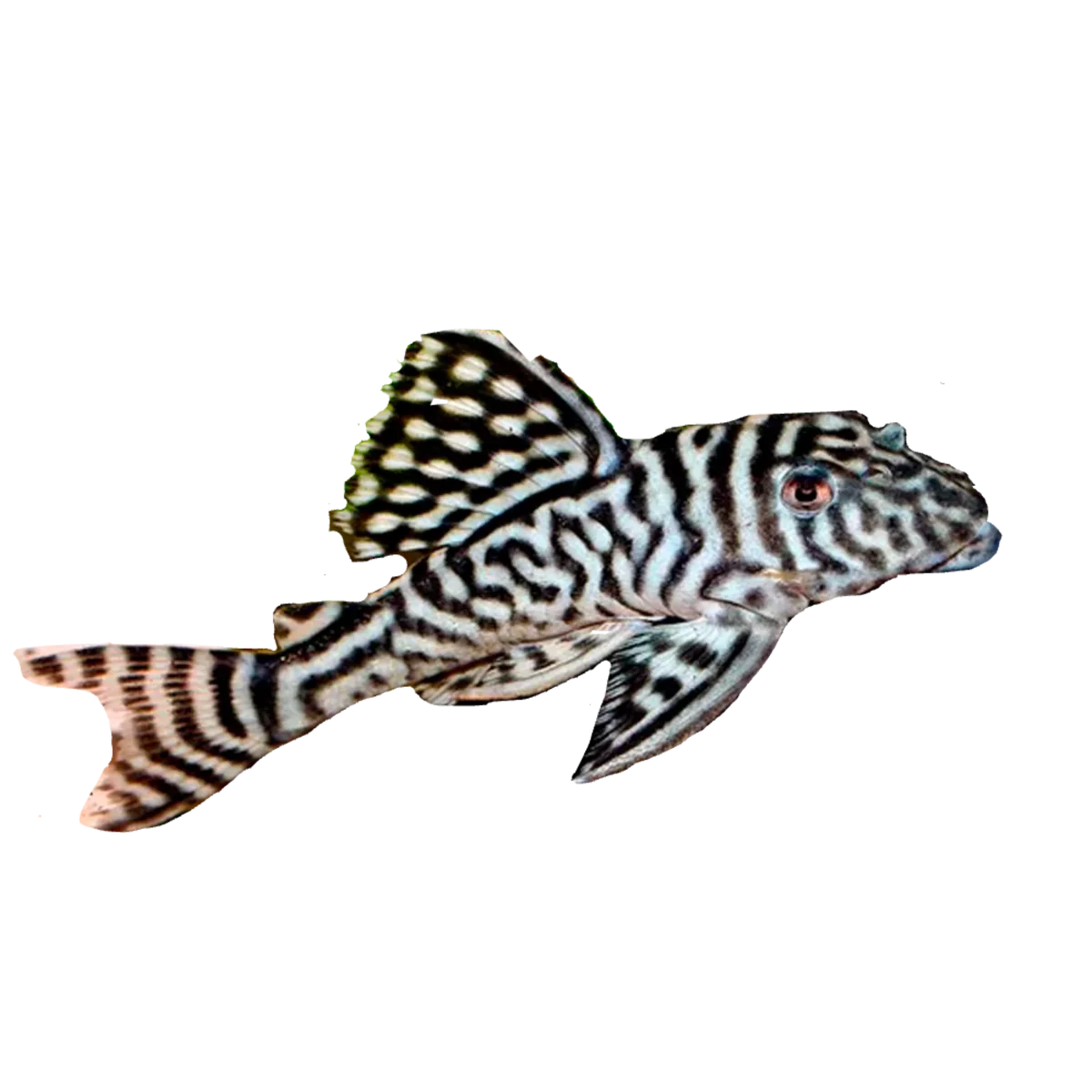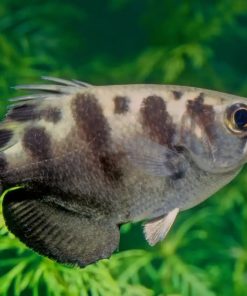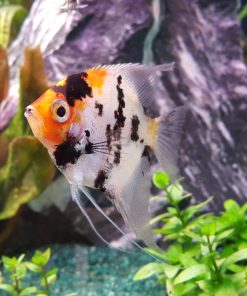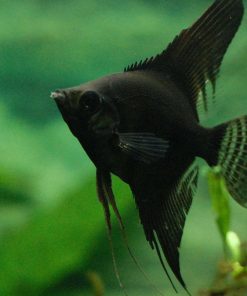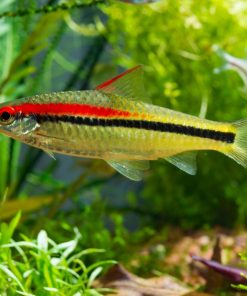Pleco – King Tiger L066 Bundarra Tropical Fish Farm
$ 60,00 $ 30,00
Distribution:
Collected from the rio Xingu downstream and in the vicinity of Belo Monte, Pará state, northern Brazil. The majority of its natural habitat is likely to be severely degraded in the near future due to ongoing construction of the Belo Monte dam.
Habitat:
Typically inhabits turbulent stretches of whitewater rapids with rocky substrates.
Maximum Standard Length:
120 – 140 mm.
Aquarium Size:
An aquarium with base dimensions of 120 x 45cm or equivalent should be the smallest considered.
Maintenance:
Not difficult to maintain under the correct conditions; we strongly recommend keeping it in a tank designed to simulate a flowing stream with a substrate of variably-sized rocks, sand, fine gravel, and some water-worn boulders. This can be further furnished with driftwood branches, terracotta pipes, plant pots, etc., arranged to form a network of nooks, crannies, and shaded spots, thus providing broken lines of sight. Like many fishes that naturally inhabit running water it’s intolerant to accumulation of organic pollutants and requires spotless water in order to thrive. Weekly water changes of 30-50% tank volume should also be considered routine. Though torrent-like conditions are unnecessary it does best if there is a high proportion of dissolved oxygen and some water movement in the tank meaning power filter(s), additional powerhead(s), or airstone(s) should be employed as necessary.
Water Conditions:
Temperature: 26 – 30°C
pH: 5.0 – 7.0
Hardness: 36 – 268 ppm
Diet:
Except when juvenile, these prefer a meaty diet. This can consist of live and frozen foods such as bloodworm, chopped mussel and prawn and sinking dried foods. Algae and other vegetable matter is not taken, but the occasional slice of cucumber or courgette might be nibbled at.
Behaviour and Compatibility:
A generally peaceful species which can be maintained in a well-chosen community alongside other quiet fishes. It should not be maintained alongside other Hypancistrus spp. in order to prevent hybridisation.
Sexual Dimorphism:
Males are more slender and less stocky than females, a difference which is easily observed when the fish are viewed from above. Odontode development is often comparable in both sexes although some older males exhibit more extensive growth on the pectoral fins.
Reproduction:
Cave-spawner with the male responsible for brood care. Has been bred regularly in aquaria.
Notes:
This unidentified species is also traded as ‘network pleco’ and ‘scribbled pleco’ and has a highly variable colour pattern. It’s regularly confused with similar-looking relatives such as L333 and L400, but differs from the former in possessing a much finer pattern of pale markings on the body and the latter by its less elongate, squatter body shape. The genus Hypancistrus is diagnosed from all other loricariids by a wide separation between the metapterygoid and lateral ethmoid, presence of a sharply angled adductor palatini crest of the hyomandibula, and no lateral wall in the metapterygoid channel. More useful for aquarists is the fact that in Hypancistrus the dentary teeth are about twice as long as the premaxillary teeth (vs. dentary and premaxillary teeth of approximately equal length).
Fast Shipping and Professional Packaging
Because of our long-standing relationship with UPS FedEx DHL as well as other leading global carriers, we can offer a variety shipping options. Our warehouse staff is highly skilled and will wrap your goods in accordance with our exact and precise specifications. Your goods will go through a thorough inspection and be adequately secured before being shipped. We ship to thousands customers every day from all over the world. This demonstrates our dedication to become the biggest online retailer in the world. Both Europe as well as the USA have distribution and warehouse centers.
Note that orders containing more than one item are processed according to the particular item.
Before shipping, we will inspect the ordered items thoroughly. Today, the majority of orders will be delivered within 48 hours. The delivery time is estimated to be between three and seven days.
Returns
Due to the multiple parties involved, including the factory and the warehouse, we're unable to completely manage our stock. Therefore, the actual inventory could change at any time. It's possible that the stock may run out after your order has been processed.
Our policy is for 30 days. If you don't receive your product within 30 days, we are not able to issue a refund or an exchange.
Your item should be in its original packaging and in good condition. It must also not be used. The item must be returned in the original packaging.
Related products
Freshwater tropical fish
Freshwater tropical fish
Freshwater tropical fish
Freshwater tropical fish
Freshwater tropical fish
Freshwater tropical fish
Freshwater tropical fish
Freshwater tropical fish
Freshwater tropical fish
Freshwater tropical fish
Apistogramma – Cacatuoides Mega Orange PAIR Bundarra Tropical Fish Farm
Freshwater tropical fish
Freshwater tropical fish
Freshwater tropical fish
Angelfish Bulgarian Seal Point 4cm Bundarra Tropical Fish Farm
Freshwater tropical fish
Freshwater tropical fish
Freshwater tropical fish
Freshwater tropical fish
Freshwater tropical fish
Freshwater tropical fish
Freshwater tropical fish
Freshwater tropical fish
Freshwater tropical fish
Freshwater tropical fish
Freshwater tropical fish
Freshwater tropical fish
Freshwater tropical fish
Freshwater tropical fish
Freshwater tropical fish
Freshwater tropical fish
Freshwater tropical fish
Apistogramma – Viejita Red Edge PAIR Bundarra Tropical Fish Farm
Freshwater tropical fish
Freshwater tropical fish
